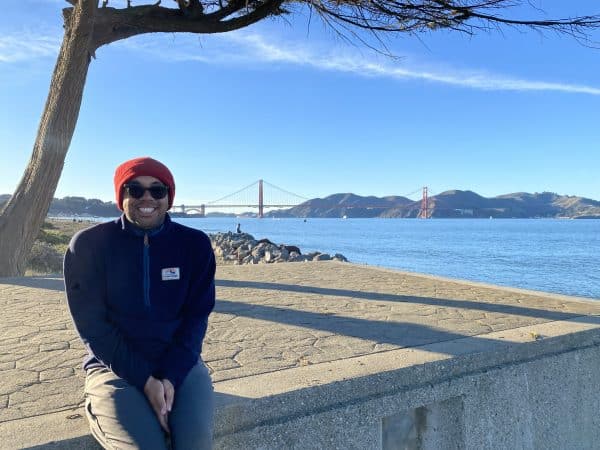Learning from public response to natural hazard videos
04/07/2018
By Caroline Orchiston
Videos are the current digital media of choice. They have been on the rise for several years now, and in 2017 74% of all internet traffic was video. However, creating quality videos can be costly and time-consuming, and as attention spans grow ever shorter, that effort could be wasted if you don’t get the video right.
This is why researchers from the Resilience to Nature’s Challenges Cultural Resilience team wanted to understand the public response to a series of videos created for Project AF8.
Project AF8 is addressing the knowledge gap around the impacts and consequences of a magnitude 8 earthquake on the Alpine Fault. The fault runs along the spine of New Zealand’s South Island, and has a regular history of producing large earthquakes: every 300 years on average. The last quake was in 1717, meaning that the next severe earthquake, which would have major direct and indirect impacts throughout New Zealand, is likely to happen in our lifetime or our children’s.
The videos
Project AF8 developed a series of videos in 2017 to provide information to the public about a future Alpine Fault earthquake, and how to prepare. These were released via the media in May 2018, and can be found here. The researchers wanted to find out how people responded to and engaged with the videos, so that they could learn from them and use the insights in their ongoing communication and outreach activities. To do this, they evaluated how audiences responded to the videos before and after their public release.

Collecting the data
Prior to their release, a series of workshops were held in three locations across the South Island. These were designed to get a sense of how accessible, engaging and informative the public thought the videos were. Once they were released publicly, digital reactions to the videos were monitored and reviewed using a content analysis process to understand how the videos were received online. Social media metrics were also monitored to measure levels and locations of engagement in the project before and after the videos were made publicly available.
Response to the videos prior to release
The feedback collected during the workshops highlighted a number of common themes. There was a high level of engagement in the videos at every session and it was generally agreed that the content and its delivery was relevant and informative without being too overpowering or complicated (e.g. ‘not too scientific’).

Participants liked that the videos showed real-life experiences. They appreciated seeing examples of proactive, forward-looking approaches to Alpine Fault quake preparedness illustrated by regional businesses. These were seen as good practical actions and prompted a few participants to consider their own operations. However, all the groups asked for more advice on how individuals, households and other community groups could prepare. People also wanted more detailed explanations and information on specific regional impacts. A few groups noted the lack of economic, cultural and gender diversity represented in the videos too, and one suggested adding subtitles, making the point that this information needs to be accessible to all members of the community.
The graphic animation of the rupture was of particular interest at every session. However, there remained some confusion about what exactly it was showing and what it meant for specific regions or cities. Many groups also had questions relating to the terminology used in the videos, for example asking ‘what does resilience mean?’, ‘what is the rate?’ and ‘what does magnitude 8 mean?’. This suggests that the use of such terms, without further explanation, can obscure meaning and even distract from key messaging.

Online response to the videos
The content analysis and review of social media metrics showed that the release of the videos via public broadcast media was successful in increasing the visibility of the project and raising awareness of the Alpine Fault hazard, indicating that this remains a key channel in improving awareness of disaster risk. However, the digital findings also suggest there is perhaps some ‘audience fatigue’ towards the reporting of disaster preparedness information via national media platforms. Nearly a third (30%) of the online reactions indicated that they felt the information was too scary and the media was scaremongering, or that there was no point in preparing for such a devastating event. Although these comments were not necessarily directed at the videos they do highlight the value in self-produced and self-managed content, which supports a deeper level of engagement with audiences and offers opportunities for interaction with community.
Lessons learned
Overall, the videos were received well in the workshop setting and proved successful in stimulating discussion and questioning around risk awareness and preparedness actions. Their online release made the content available to a larger audience and has increased engagement and awareness of Project AF8 and the Alpine Fault hazard.
Findings from the workshops indicate that people want to see videos that contain specific details about the impacts of such an event, particularly in their region or city. They also want practical advice on how households, communities and regions can prepare. This suggests that in creating a video it is important to consider what the viewer can get out of it, rather than what you want to get across. Shaping your message in a way that adds value for the viewer is vital to ensure a positive reception.
The workshops also highlighted the need to ensure videos show diversity and are accessible to as much of the community as possible. This includes being conscious of the use of jargon when explaining complex science. Using words like resilience or magnitude without clarifying their definition can cause confusion and prevent viewers from grasping key messages. Unpacking these terms further could enhance audience interpretation, leading to more effective and useful communication.



